Barriers Impede Pharmacies’ Full Potential as Champions of Public Health Care
Key Takeaways
- Pharmacies face regulatory and reimbursement barriers, limiting their integration into the US health system despite their potential to enhance public health services.
- The Milken Institute report identifies opportunities for pharmacists to address primary care shortages and provides 35 recommendations to expand their role.
Experts at the Milken Institute address better ways of adopting pharmacy services within the greater health care ecosystem.
With common infrastructure barriers and a complex policy landscape, pharmacies have faced significant challenges in payment and regulation, causing an industry to fall short of its role in US public health.
According to a recent Milken Institute report, pharmacies provide necessary services focused on chronic disease, mental and behavioral health, and reproductive and sexual health. In order for pharmacies to continue providing the value within these services, the authors of the report believe the aforementioned barriers must be broken down, with the help of all necessary partners in the health care sector.1
“Despite their accessibility and the effectiveness of highly trained pharmacists, the US health system lacks sustainable mechanisms to integrate pharmacy-based health care services at scale,” wrote the authors of the report. “Although many states have expanded pharmacists’ scope of practice, significant regulatory and reimbursement barriers persist.”
In its debut report titled “Advancing Health Through Expanded Access to Pharmacy-Based Care,” the Milken Institute gathered 4 of its leading experts to present their findings from extensive research, interviews, and roundtable discussions with various leaders across health care. The key goal of their inaugural report released earlier this year is to provide the proper stakeholders with knowledge and recommendations for driving the sustainability of pharmacy-administered services.
To reach these goals through growing partnerships with major health care stakeholders, report researchers first identified the health care service areas pharmacists are best-positioned to provide. While detailing the pharmacist’s growing ability to improve public health and be an equitable provider across health care, they also provided 35 recommendations to help grow the profession and allow the rest of the health care ecosystem—and even more importantly patients—understand the true value of pharmacies.
“Pharmacies are the face of neighborhood health care, and this report provides a clear, actionable road map to ensure that Americans can access the care they need, when and where they need it,” Steven C. Anderson, FASAE, CAE, IOM, president and CEO of the National Association of Chain Drug Stores (NACDS), said in a statement.2 “By advancing payment models, standardizing credentialing, and leveraging technology, we can empower pharmacists to deliver the full spectrum of clinical services that communities demand.”
READ MORE:
Identifying Opportunities and Overcoming Challenges in Pharmacy
The Milken Institute Report began in the summer of 2024, when the organization’s public health team gathered to identify barriers and opportunities for expanding pharmacists’ scope in administering health care services. The barriers that need addressing and the opportunities at pharmacists’ disposal were indeed identified to benefit the pharmacy industry, its workforce, and the bottom line of pharmacy businesses.
However, more importantly, the report was also designed for establishing a more expanded landscape of access to pharmacy-based services for patients in the community.
“The acquisition of primary care practices by private equity investors is further disrupting the ecosystem with uncertain consequences for care access and quality,” continued the authors of the report.1 “Often the first line of defense in managing chronic disease and preventable hospital visits, primary care is essential. Yet, with existing shortages, most primary care physicians lack the time to deliver all the preventive and chronic disease services needed.”
According to them, the current health care landscape is primed for pharmacists to step in and begin providing a myriad of chronic disease, reproductive, sexual, mental, and behavioral health care services. In 2037, estimates say the health care workforce will be short over 87,000 primary care physicians.1 On top of the increasing shortages expected to rise further, there are currently 7488 health professional shortage areas for primary care in the US, accounting for nearly 74 million patients.3
In the Milken report, the authors start by drawing attention to this shortage. With primary workforce burdens directly impacting overall access to care across the country, experts believe pharmacies possess a novel opportunity to address these issues. However, the well-known financial and regulatory barriers continue to impede the pharmacy industry.
Through their report, Milken highlights the value of community pharmacies by redefining the value proposition, prioritizing health care service offerings now and in the future, identifying infrastructure barriers for standardization and streamlining, and navigating the policy landscape.1
The Road Map to Expanding Pharmacy-Led Health Care Services
“According to a 2022 Ask Your Pharmacist survey, most pharmacists (81%) want to expand their health care services beyond immunizations, but nearly 85% said they receive only partial or no payment for additional services,” they continued. “Yet other providers, such as physician associates and nurses, are reimbursed for their time regardless of whether they provide diagnostic or other services or products during a visit.”
Before exploring the regulatory challenges the industry needs help in addressing, researchers presented a full breadth of pharmacists’ clinical value. Touching almost every aspect of a patient’s potential health needs, they presented 13 core areas where pharmacists can improve patient outcomes.
Those areas included chronic disease screening, adherence and medication therapy management, heart health, diabetes, respiratory, immunizations, test-and-treat for routine illnesses/infections, health-related social needs, reproductive health, sexual health, HIV, mental health, and behavioral health.
Pharmacists have demonstrated evidence-based value in providing support for tobacco cessation, hormonal contraceptives, HIV testing, vaccine administration, the management of drug regimens, and so much more. Collecting all of pharmacists’ known health-related capabilities in one succinct report, Milken researchers are continuing to highlight the fact that pharmacists are ready to take the burden away from primary care.
READ MORE:
Addressing the Accessibility, Financial, and Regulatory Challenges Remaining
The key challenges at stake are focused mainly on pharmacies’ ability—or lack thereof—to receive compensation for the aforementioned services. There is an apparent need to address the persistent infrastructure barriers that Milken researchers and other pharmacy experts agree impede access to care.
To do so, experts believe it is essential to standardize credentialing across health plans, integrate quality documentation in billing, and ensure appropriate reimbursement.
“There’s not a standardization for what the expectation is for pharmacist credentialing right at the front door. That makes it very challenging because so many health plans say you need to…complete a credentialing packet,” said a key health plan leader, according to the report.1 “When you go through that credentialing process, there are questions within that process that do not apply to a pharmacist. Pharmacists don’t have admitting rights at a hospital, so when you get to that question, you can’t answer that question. And then it sets off multiple swirls within that system as far as being able to get through that process.”
Essentially, within the greater health care ecosystem, the current infrastructure has made a habit of simply cutting pharmacists out of important conversations. Without their potential for integrating within health plans and receiving equal billing expectations as other providers, pharmacies are grossly inept at sustaining their ability to provide services—leading Milken to go straight to the lawmakers for necessary government intervention.
In their policy areas of focus, researchers identified 4 distinct categories: scope of practice, payment pathways, operational efficiencies, and pharmacy team optimization.
“Pharmacists’ ability to provide health care services depends on state regulations defining their scope of practice. Once scope authority exists, sustainable payment models are necessary to expand health care availability,” continued the authors of the report.1 “Policies that support enhancing operational efficiencies can free up pharmacists’ time to provide health care services and enable them to shift capacity toward services that most support community health. Policies that govern the roles of pharmacy staff beyond the pharmacist, such as pharmacist-to-pharmacy-technician ratios and technician duties, impact overall capacity to deliver health care services.”
With pharmacists making their voices heard now more than ever, as well as lawmakers gradually understanding the industry’s challenges,4 there is hope for a future with better access, greater pharmacy reimbursement, and an overall improvement in community health.
According to Milken, pharmacies have to be harnessed—the same way patients deserve to be included—in order for the US to do a better job at delivering accessible, affordable, and valuable care.
“Ultimately, the expansion of pharmacy-based health care services requires coordinated efforts to align regulatory frameworks, create sustainable reimbursement mechanisms, and invest in infrastructure,” they concluded.1 “By harnessing pharmacies as trusted and accessible health access points, stakeholders can create a more effective health care system."
READ MORE:
Are you ready to elevate your pharmacy practice? Sign up today for our
REFERENCES
1. Roesler AR, Lin-Schweitzer A, Hesse-Fong J, et al. Advancing health through expanded access to pharmacy-based care. Milken Institute. July 22, 2025. Accessed November 21, 2025. https://milkeninstitute.org/content-hub/research-and-reports/reports/advancing-health-through-expanded-access-pharmacy-based-care?check_logged_in=1
2. Milken Institute debuts report to advance pharmacy-based healthcare access. News Release. NACDS. July 22, 2025. Accessed November 21, 2025. https://www.nacds.org/milken-institute-debuts-report-to-advance-pharmacy-based-healthcare-access/
3. Addressing the physician workforce shortage. AAMC. Accessed November 21, 2025. https://www.aamc.org/advocacy-policy/addressing-physician-workforce-shortage
4. Lovelace B. House lawmakers slam pharmacy middlemen over sky-high drug prices. NBC News. July 23, 2025. Accessed November 21, 2025. https://www.nbcnews.com/health/health-news/house-lawmakers-slam-pharmacy-middlemen-sky-high-drug-prices-rcna163180
Newsletter
Pharmacy practice is always changing. Stay ahead of the curve with the Drug Topics newsletter and get the latest drug information, industry trends, and patient care tips.













































































































































